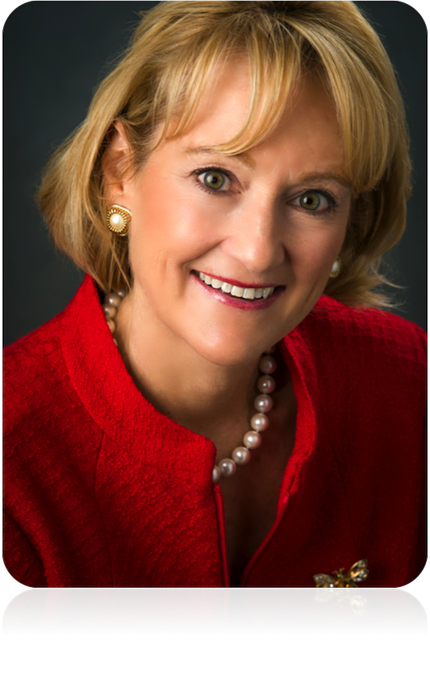
To Honor 100 Years of Women’s Voting Rights: Exercise Yours
 This week we celebrate a century of women’s voting rights, as we hit the 100th anniversary of the ratification of the 19th Amendment. It’s hard to believe that it was only 100 years ago—in August 2020—that society finally achieved this historical landmark that gave women the right to vote.
This week we celebrate a century of women’s voting rights, as we hit the 100th anniversary of the ratification of the 19th Amendment. It’s hard to believe that it was only 100 years ago—in August 2020—that society finally achieved this historical landmark that gave women the right to vote.
It’s important to note that it would still be several decades before all women—including women of color—would be able to exercise voting rights. Keeping this in mind, now is a time to pause to honor the determined and dedicated women who came together to achieve this initial victory—including the first national suffrage organizations led by Susan B. Anthony, Elizabeth Cady Stanton, and Lucy Stone—so that we collectively remember what’s behind our current voting rights. The momentum achieved didn’t come without hard work, determination, and relentless persistence by so many strong and committed women who together, with the leaders of the suffrage organizations, helped achieved this landmark.
Women like Anthony, Stanton, and Stone were practicing inclusion in their day and opening up doors for women whose voices and preferences for local and national leadership choices were effectively silenced, and by getting out there and voting, we can help ensure that people continue to have inclusive representation. This is why it’s so important to be an active participant in elections regardless of party affiliation.
Here are some steps to take in light of this historic moment, and to adopt over the long term:
- Recognize the excuses that keep you from voting. In any given election, there is always a surprisingly high percentage of people who miss out on the chance to make a difference. There are many excuses behind why we may not opt in for the opportunity vote. Some that I’ve heard frequently are: “I don’t think my vote will matter.” “I didn’t plan for it by researching the issues/who is running, so I’m not sure who/what to vote for,” or “All the politicians are the same, so why vote?”
- Overcome these excuses. Each of the excuses above can be overcome: the first by reminding ourselves that our vote—and efforts to get others to weigh in with their votes—do matter. We can encourage our women colleagues and friends, as well as men, to vote. Second, we can take time to learn about the issues. And third, we can realize through our research that each candidate brings something different to the table, so it’s important for us to choose who we want to represent us. The fact is that as women, we need to leverage the power that the activists of the past fought to bring us—to get involved, not stay on the sidelines.
- Do your research—but don’t need it to be perfect. One of the biggest reasons that women may forgo the opportunity to select political candidates and vote for issues is that they don’t feel they know enough about the various options. We can examine this as a larger issue about women’s confidence level in their own knowledge and how it can keep them from opportunities. For example, when it comes to applying for jobs, research has shown that many women feel they must have every qualification listed to apply, while men will throw their hat in the ring if they only have some of the employer’s desired qualifications. I call this a sticky floor which is a self-limiting belief that hold us back from our highest good and potential. By understanding the tendency that some women have—a need to be perfectly informed before participating—you can do an adequate amount of research and then cast your vote. Pay attention, listen, and learn from each candidate, ask tough questions, be open to learning, and challenge your assumptions. You can learn the basics through a moderate amount of research and make an informed vote without needing to know every single detail about a candidate or issue.
As the Washington Post recently reported, “The history of women voting is still a history of having representation without being represented,” and there is still much further to go in terms of progress. Even today, we’re not fully where we need to be. A recent survey from the Pew Research Center to gauge perceptions about the 19th Amendment found that 57 percent believed more work needed to be done toward gender equality. Even more significantly regarding the vote, about 30 percent of men felt their own advancement had been hindered by women’s advancement. We now as women have the opportunity—and, frankly, given the long, tough fight to ensure women’s voting access, the responsibility—to carry out the act of demonstrating our rights and being an active participant in voting elections.
Contact me at info@shambaughleadership.com or link to SHAMBAUGH’s offerings to learn more about SHAMBAUGH’s trainings in Leading in Uncertain Times, Accelerating Gender Equity, Executive Coaching, and Inclusive Culture
Rebecca Shambaugh is President of SHAMBAUGH Leadership, expert in inclusion/equity for all, and Founder of Women in Leadership and Learning. Rebecca is a contributing writer to Harvard Business Review, the HuffPost, and a TEDx speaker. Rebecca has been featured on CNBC, Forbes, Training Magazine, and US News and World Report. She is author of the best-selling books It’s Not a Glass Ceiling, It’s a Sticky Floor and Make Room for Her: Why Companies Need an Integrated Leadership Model to Achieve Extraordinary Results.
Find out more about us at: www.shambaughleadership.com


Leave a Reply